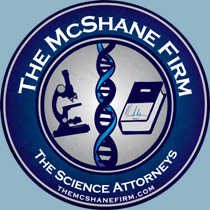I am going to write something that may shock you, but: There is no such thing as moonlight. Think about it. Moonlight is simply a reflection of sunlight on the moon’s surface. The moon emits no light of its own origin. Yet, people call it moonlight. Moonlight is a misnomer. It is a conceptual myth. […]

The Problem of Modern Forensic Science: Novices can become experts at the push of a button
I have lamented before about the horrible state of affairs that has developed in modern forensic science and in particular instrumentation. As an industry, the machine manufacturers seek to automate and make these processes so simple that they no longer require true understanding of the underlying science or the process that makes the machine do […]

Limitations of Forensic Odontology
In the past, we have blogged on the severe limitations on pattern recognition as a forensic science discipline. (Pattern Recognition is it Science or an Art?). In fact, the National Research Council of the National Academy of Sciences pointed to one form a pattern recognition as being most problematic: forensic odontology. Most broadly defined, it is […]

The Houston Crime Laboratory: A continuing model of what is wrong?
It’s been long known that the Houston Crime Laboratory has struggled for a long time. According to www.hpdlabinvestigation.org the relevant historical context can be summed up as follows: The public crisis that eventually led to the hiring of an independent investigator to review the Crime Lab’s operations began on November 11, 2002, with the first in […]

Why don’t crime laboratories lose their accreditation more often?
As we have reported here before, state crime laboratories almost never lose their accreditation even when horrible issues of quality control emerge and massive failures of quality assurance are exposed. There is of course one notable exceptions to this proclamation: State Forensic Lab Loses Accreditation Malloy Official Says Concerns Being Addressed Here is the normal […]

Standards, Controls, Calibrators, and Verifiers, Oh my…
Lions and Tigers and Bears… Verifiers, Calibrators and Controls… Oh my! Sometimes a criminal defense attorney can at times feel like Dorothy in the Wizard of Oz in that we are transported from the relative safety of home (the courtroom) to the weird world of Oz (the laboratory). There are unusual and often times conflicting […]

Police Science: Re-purposing of Capilliary Columns for Drugs of Abuse testing
As I have written before a lot of forensic science is really legitimate analytical chemistry that is re-purposed for the courtroom, but without proper scientific method validation before deploying it into this new purpose. This re-purposing of legitimate techniques and employing them without examining the true validity of doing so is not scientific. I call […]

Co-elution in a nutshell
Co-elution is a very important concern in forensic chromatography. In a nutshell co-elution can be defined as when non-resolved (non-separated) compounds elute (come off) the column at the same time. It comes comes in two forms: (1) lack of specificity (inter-sample co-elution), and (2) analytical carry-over (intra-sample co-elution). Lack of specificity: A Gas chromatograph is […]

A Gas Chromatoagraph or Liquid Chromatograph is not like a calculator
I am fond of pointing out that a Gas Chromatograph (GC) and a Liquid Chromatograph (LC) are not like a simple calculator where anyone walking up to a calculator regardless if it is a 2 year old or a PhD in mathematics who keys in 2+2, the result will always be 4, it requires interpretation […]

Mass Spectroscopy for Lawyers Part 8: A scientific war, between spectroscopists and chromatographers is co-eution a problem in hyphenated MS work?
In a series of posts, we are going to talk about Mass Spectrometry. Introduction-The different configurations and the Electron Impact process What types of mass analyzers are there? What type of detectors are there? What types of analysis can be done? How do you read the output? How do they come to a qualitative measure […]

Mass Spectroscopy for Lawyers Part 6: How do they come to a qualitative measure using software?
In a series of posts, we are going to talk about Mass Spectrometry. Introduction-The different configurations and the Electron Impact process What types of mass analyzers are there? What type of detectors are there? What types of analysis can be done? How do you read the output? How do they come to a qualitative measure […]


